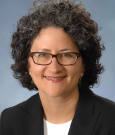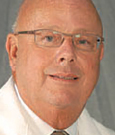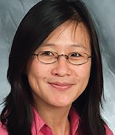Treatment of childhood cancer is remarkably successful, but still, 2,000 children die of it each year, and for some forms of the disease, no progress has been made at all, said Otis Brawley, MD, Chief Medical Officer, American Cancer Society (ACS). “At least half of all pediatric cancer survivors have five comorbid conditions directly related to the cancer—or more likely, its treatment—and some prove fatal,” he added. He made these observations in his introduction to a National Cancer Policy Forum, cosponsored by ACS, held at the Institute of Medicine.
Joanne Wolfe, MD, Director of Pediatric Palliative Care, Boston Children’s Hospital and Division Chief, Department of Psychosocial Oncology and Palliative Care, Dana-Farber Cancer Institute, added that the general public is becoming aware of quality of life in cancer, especially for children. “Advances in treatment are costly in ways other than economic. Many young survivors suffer mental impairment, poor motor functioning, and highly compromised social well-being that last for decades.”
“In addition, the disease necessitates difficult decisions about treatment, almost all of which carries significant toxicity. They are forced to balance survival and quality of life—with limited support to guide them.”
Progress and Challenges
Gregory Reaman, MD, Associate Director for Oncology Sciences, U.S. Food and Drug Administration Center for Drug Evaluation and Research, said there has been considerable progress in treatment. Multicenter, multidisciplinary research, a highly effective clinical trials infrastructure, and a practice model that integrates clinical care and clinical research explain the improved outcome for the nearly 15,000 patients diagnosed annually. There is a highly effective national clinical trials infrastructure, and clinical practice models lead to integrated clinical care and research.
Nevertheless, challenges remain. “Childhood cancers are only 1% of the United States total. Pharmacology is complex, because normal growth and development, changing organ function, and metabolic enzymes must be taken into consideration. Current industry research and development models do not favor pediatric drug development, and there are insufficient preclinical models and testing programs. Goals are dissimilar for pediatric drug development, where cure is the primary objective. For instance, what do we mean by “clinical benefit”: cure or prolongation of life? And should survivable childhood cancers be viewed as ordinary chronic diseases because they follow into adulthood and not strictly pediatric ones?”
There has been progress in childhood cancer genomics as well. “The vast majority of recurring genomic alterations have been identified, and we know that pediatric tumors have fewer gene mutations than adult ones. Many are driven by mutations that are rare in adult cancers, such as high-grade gliomas, neuroblastoma, rhabdomyosarcoma and Ewing sarcoma, and some brain tumors, and are thus not relevant to molecularly targeted agents approved or in development for adults.”
Moreover, the relatively small number of patients with any specific cancer makes clinical trials difficult. This is further complicated by subdivisions of diagnoses based on genomic characteristics; for example, there are four subtypes of meduloblastoma, each with its own therapeutic strategy.
Promising approaches are in development, however, including monoclonal antibodies, immunoconjugates, enhancement of host-effector T-cell function, and engineered cell therapy.
But even if every drug worked every time in every patient, short- and long-term toxicity may still be a problem, even with targeted agents, said Dr. Reaman. The list of acute and chronic complications is long, often severe, and sometimes life-threatening: diarrhea; fever; chills; asthenia; cardiotoxicity; hypertension; and cerebrovascular, pulmonary, eye, musculoskeletal, neurologic, and endocrine-reproductive diseases, as well as immunodeficiency and autoimmunity. And there are second cancers.
Dr. Reaman is optimistic, but “we need to expand opportunities in precision medicine, shift paradigms in study design, and develop science-based strategies to decide which new products to test—when and in what diseases—and how to integrate them with currently effective standard therapy.”
Survival Comes With Problems
Smita Bhatia, MD, MPH, Director, Institute of Cancer Outcomes and Survivorship, University of Alabama at Birmingham, echoed the significant increase in survival since the 1970s. Then, only 63% survived; now close to 90% do. “There are now 379,000 survivors in this country [there will be half a million by 2020], all of whom are aging. Many have significant morbidity, and as time away from diagnosis increases, so does the likelihood of early death. The implications of cure are not trivial.” Ways to look at them include the following:
- Describing known relationships between treatment and morbidity and premature mortality: for example, understanding various therapeutic exposures that can result in adverse events: anthracyclines and chest radiation and heart failure; radiation, alkylating agents, and topoisomerase II inhibitors and second cancers; steroids, radiation, and osteonecrosis; and radiation and stroke.
- Understanding the pathogenesis of morbidity.
- Comparing survivors who suffer adverse events with those who escape them.
- Developing targeted interventions to reduce morbidity: for example, banking DNA and RNA from survivors with and without adverse events and exploring the role of genetic susceptibility.
- Optimizing long-term health by creating partnerships with parents and patients.
Only in the past 2 decades or so have clinicians and researchers realized the enormous impact of survival, said Dr. Bhatia. “We need to extend and standardize follow-up, which means that all providers—general pediatricians, internists, and family practitioners, as well as pediatric oncologists—must be aware of the risks, so survivors receive long-term follow-up care.”
Mary Jo Kupst, PhD, Professor Emerita, Medical College of Wisconsin, talked about how children and their families cope with the disease. “Although end-of-life issues are important, we are placing increasing emphasis on living with childhood cancer.”
However, survival has more than medical problems—ending treatment, for example. Although patients and their families are relieved to be done with drugs, blood tests, and clinical visits, the loss of the “safety net” of treatment and supportive care is scary, and transition to follow-up carries its own stress. So does being a survivor. Most survivors require health monitoring of one kind or another for many years, usually forever, and life is significantly altered for all. Their personal outlook, academic and/or vocational plans, and social and spiritual lives change, again often forever.
Each age group has unique problems, said Dr. Kupst. Very young children can regress developmentally and become fearful of things and situations they had mastered. School-aged children may be academically and socially left behind their peers and not able to participate in previous activities. Often because of the experience, they develop a different, more mature, emotional path than their peers and can no longer relate well to friends.
Adolescents, who are emotionally labile in the best circumstances, suffer emotionally when their school and social lives are disrupted. They may have problems with identity and need emotional support and/or psychological counseling. And it’s not uncommon for them to engage in risky behavior—as if they can survive anything because they have survived cancer.
Young adults have all these same problems and others unique to their age group: graduating from school later than their peers or not at all; limited types of work open to them; trouble with relationships and marriage; and long-term problems such as infertility.
“We have learned that characteristics from early in life (dealing with stress, coping mechanisms, family function) tend to predict later outcomes and have strong influences on quality of life. Not all are helpful, but despite the devastating effect of cancer, most children and their families are able to cope with them. Although 25% to 33% of children and families have long-term significant distress and need continuing care—and cancer is not something one just gets over—survival of the disease itself is usually accompanied by survival of the psyche as well,” said Dr. Kupst.
Patient-Reported Outcomes
Malcolm A. Smith, MD, PhD, Associate Branch Chief for Pediatric Oncology, National Cancer Institute, prefaced a panel discussion with remarks about the need for collaboration, which he said is essential to pediatric oncology. “It answers important questions about therapy for clinically and genomically defined populations and is critical to the quality of survivorship.”
He also stressed the distinction between prioritizing potential clinical trials based on the most important question of therapy for a specific anticancer drug vs prioritizing based on the most important question of therapy for a specific childhood cancer. He urged prioritization based on the latter, with clinical trials for specific childhood cancers focusing on the key factors that result in treatment failure and on the issues that diminish short- and long-term quality of life. With this focus, research teams can determine what are the best clinical research opportunities to address these problems.
Lillian Sung, MD, Staff Physician, Haematology/Oncology, The Hospital for Sick Children, Toronto, highlighted the important contributions that patient-reported outcomes can make to clinical trials.
“A patient-reported outcome is a measurement based on a report that comes directly from the patient about the status of a health condition without amendment or interpretation by anyone else.” A proxy-reported outcome (common with children) is not a patient-reported outcome, she added.
Patient-reported outcomes cover many aspects of what happens to children with cancer: symptoms; physical function; psychosocial health; and other issues, including satisfaction with care and adherence to treatment.
Dr. Sung said that collecting patient-reported outcomes in research as well as clinical practice is critical, because they can be used to counsel children and their families about what to expect, they can predict physical risk and determine which groups are at the highest risk for poor quality of life; and they can help make decisions about treatment.
“Few research studies include patient-reported outcomes,” said Dr. Sung, and there is no core set of instruments or symptoms. Researchers should identify phase II and III trials in which patient-reported outcomes could be incorporated and integrated, especially when the prognosis is poor.
The role of proxy reporting (parent or guardian) vs patient-reported outcomes also should be clarified. We need to understand what the smallest, clinically important difference is for physician-reported outcomes, to better understand the magnitude of change associated with treatments. We also need instruments that can be used for adolescents and young adults, since generally, validated instruments are available for children < 18 years of age or adults, but not both.
Furthermore, researchers should focus on data quality and dissemination of the knowledge gained about patient-reported outcomes. Endpoints should be analyzed and published along with other trial results. Finally, patient-reported outcomes data should be brought to the bedside to enhance provider-patient communication, alert providers to key symptoms, improve patient satisfaction, make good use of time during clinical encounters, and improve symptom control and supportive care.
Pediatric Palliative Care
Jennifer Mack, MD, Co-Director, Pediatric Hematology/Oncology Fellowship Program, Dana-Farber Cancer Institute, said that communication is critical. “It allows providers and patients to share knowledge, can relieve stress and uncertainty, may build a therapeutic relationship, and can create an opportunity for thoughtful decision-making.”
For instance, in conversations about prognosis, she and colleagues found that 61% of parents hold overly optimistic beliefs during the course of treatment, and Dr. Wolfe and colleagues found that parents of children who died of their disease realized that the child had no realistic chance of cure 3.4 months after physicians did. However, those who grasped the reality sooner rather than later established earlier do-not-resuscitate orders and used less cure-directed therapy at the end of life.
She described key steps to advance communication in palliative care. First, physicians should be willing to talk about difficult topics. Tough conversations occur throughout care: at diagnosis, when complications occur, at relapse, during advance care planning, and even during survivorship. Many physicians believe that bad news has negative consequences for patients and families, including unnecessary distress or lost hope, so they avoid the conversation and wait for patients and parents to ask direct questions. Or they talk in euphemisms and offer overly optimistic information. Although it seems paradoxical, the more information parents receive, even when the news is bad, the more hope they have—and the more they trust the physician.
Another step is to use communication as an opportunity to build a relationship. Even bad news can help with this. Parents need information about prognosis and find it helpful for decision-making, even as they also find it upsetting. And, said Dr. Mack, parents who have too little information are most likely to be upset.
Finally, goal-oriented decision-making throughout care should be promoted. The less accurate the information, the more parents worry, and the more likely it is they will make poor choices for their children.
The most important thing that caregivers can do when developing relationships with cancer patients and their parents is to listen, especially when children are present in the conversation. “By listening,” said Dr. Mack, “clinicians teach children and parents that their words have meaning, and when patients and families can express themselves, clinicians gain helpful information to provide the best care.”
Dr. Wolfe described some of what happens in childhood cancer. “First, there is hope for a cure, longer life—a miracle. Then when that can’t happen, parents hope for comfort and meaning.”
Through it all, there should be palliative care. All clinicians who care for children with cancer ought to have basic knowledge, skills, behaviors, and attitudes, but this often is not the case. “Most physicians learn primarily through trial and error, and 71% of training programs lack a palliative care curriculum. Nurses in particular need training,” said Dr. Wolfe. Moreover, only 58% of Children’s Oncology Group member institutions have a palliative care program, and many are understaffed.
Families may not realize that palliative care improves outcomes, but data suggest that it does, said Dr. Wolfe. Children who receive palliative care are more likely to have fun than those who do not (70% vs 45%) and to experience things that add meaning to life (89% vs 63%). Families who received palliative care reported improved communication. And children receiving palliative care had shorter hospitalizations and fewer emergency room visits. ■
Disclosure: Drs. Wolfe, Reaman, Bhatia, Smith, Sung, and Mack reported no potential conflicts of interest.









